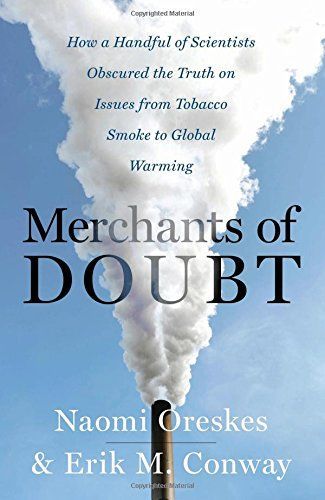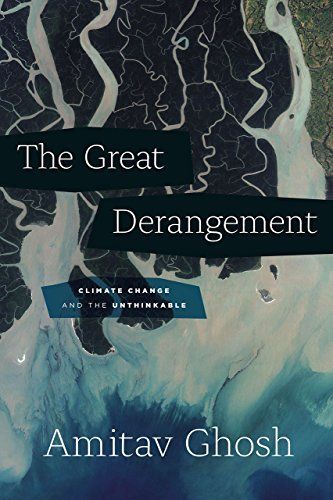KUTUBDIA, Bangladesh — Anyone who doubts climate change should come to this lovely low-lying island, lapped by gentle waves and home to about 100,000 people.
But come quickly, while it’s still here.
“My house was over there,” said Zainal Abedin, a farmer, pointing to the waves about 100 feet from the shore. “At low tide, we can still see signs of our house.”
Already much of Kutubdia has been swallowed by rising seas, leaving countless families with nothing. Nurul Haque, a farmer who lost all his land to the ocean, told me that he may have to pull his daughter, Munni Akter, 13, out of eighth grade and marry her off to an older man looking for a second or third wife, because he has few financial options left to support her.
“I don’t really want to marry her off, because it’s not good for girls,” he said glumly. “But I’m considering it.” He insisted that if it weren’t for the rising waters and his resulting impoverishment, he wouldn’t think of finding a husband for her... (continues)
PHIL 3340 Environmental Ethics-Supporting the philosophical study of environmental issues at Middle Tennessee State University and beyond...
Friday, January 19, 2018
Monday, January 8, 2018
5 books on the politics of climate change
‘We’re on a path that is going to lead to tremendous destruction and yet most of us are going about our lives as if nothing particularly special is happening.’ The science of climate change is incontrovertible but deniers persist and political and economic solutions continue to be – systematically – frustrated. Time is running out, says Naomi Oreskes
The risks of climate change are increasingly clear and urgent. And yet, in the United States and some other countries, policies to significantly reduce greenhouse gas emissions do not seem to be working. The US President has called climate change a hoax and pulled the United States out of the Paris Agreement. And about 6.5 percent of global GDP — about 5 trillion dollars a year — goes to subsidising fossil fuels. How did we get into this situation in the first place?
Scientists have known for a long time that an increase in atmospheric greenhouse gases—produced by burning fossil fuel—could change the climate. By the late 1970s, it was clear that greenhouse gases were accumulating in the atmosphere, and scientists concluded that this would cause effects, probably by the end of the century. However, the observable effects came sooner than they expected: in 1988, scientists at NASA led by James Hansen, concluded that anthropogenic climate change was underway.
Hansen’s work got a good deal of attention. He testified in Congress. It was reported in the New York Times. And that same year the Intergovernmental Panel on Climate Change was created, in anticipation that the world would need good scientific information to inform policy decisions on the issue. Most scientists involved at the time thought that there would soon be a political response. And there was, but it was not the one they expected.
Until that time, there was no political resistance to climate science. Many climate scientists were Republicans, and throughout most of the post-war period, Republican political and business leaders had supported scientific research as strongly, if not more strongly, than Democratic leaders did. But, in the 1980s—just as the reality of climate change was being established scientifically—some people began to realise that if anthropogenic climate change was as dangerous as scientists thought, it would require government action to deal with it. In particular it would require government intervention in the marketplace, such as regulation or taxation to reduce or even eliminate the use of fossil fuels... (continues)




The risks of climate change are increasingly clear and urgent. And yet, in the United States and some other countries, policies to significantly reduce greenhouse gas emissions do not seem to be working. The US President has called climate change a hoax and pulled the United States out of the Paris Agreement. And about 6.5 percent of global GDP — about 5 trillion dollars a year — goes to subsidising fossil fuels. How did we get into this situation in the first place?
Scientists have known for a long time that an increase in atmospheric greenhouse gases—produced by burning fossil fuel—could change the climate. By the late 1970s, it was clear that greenhouse gases were accumulating in the atmosphere, and scientists concluded that this would cause effects, probably by the end of the century. However, the observable effects came sooner than they expected: in 1988, scientists at NASA led by James Hansen, concluded that anthropogenic climate change was underway.
Hansen’s work got a good deal of attention. He testified in Congress. It was reported in the New York Times. And that same year the Intergovernmental Panel on Climate Change was created, in anticipation that the world would need good scientific information to inform policy decisions on the issue. Most scientists involved at the time thought that there would soon be a political response. And there was, but it was not the one they expected.
Until that time, there was no political resistance to climate science. Many climate scientists were Republicans, and throughout most of the post-war period, Republican political and business leaders had supported scientific research as strongly, if not more strongly, than Democratic leaders did. But, in the 1980s—just as the reality of climate change was being established scientifically—some people began to realise that if anthropogenic climate change was as dangerous as scientists thought, it would require government action to deal with it. In particular it would require government intervention in the marketplace, such as regulation or taxation to reduce or even eliminate the use of fossil fuels... (continues)
"‘We’re on a path that is going to lead to tremendous destruction and yet most of us are going about our lives as if nothing particularly special is happening."
Naomi Oreskes (@naomioreskes) recommends the five best books on climate change politics: https://buff.ly/2CqPQBc




Wednesday, January 3, 2018
Why there's a big chill in a warming world
Anchorage, Alaska, was warmer Tuesday than Jacksonville, Florida. The weather in the U.S. is that upside down.
That’s because the Arctic’s deeply frigid weather escaped its regular atmospheric jail that traps the worst cold. It then meandered south to the central and eastern United States.
And this has been happening more often in recent times, scientists say.
___
WHY IS IT SO COLD?
Super cold air is normally locked up in the Arctic in the polar vortex , which is a gigantic circular weather pattern around the North Pole. A strong polar vortex keeps that cold air hemmed in...
That’s because the Arctic’s deeply frigid weather escaped its regular atmospheric jail that traps the worst cold. It then meandered south to the central and eastern United States.
And this has been happening more often in recent times, scientists say.
___
WHY IS IT SO COLD?
Super cold air is normally locked up in the Arctic in the polar vortex , which is a gigantic circular weather pattern around the North Pole. A strong polar vortex keeps that cold air hemmed in...
Subscribe to:
Comments (Atom)